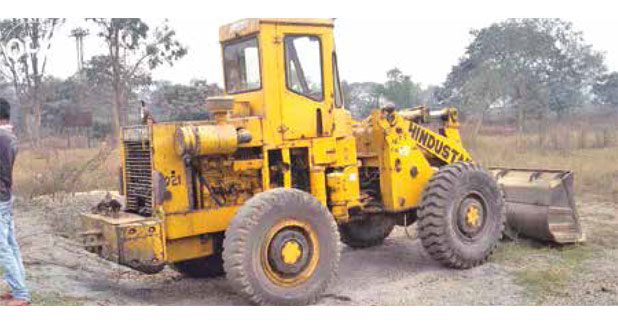
Front-end Loaders Dominate Rentals
Market information on rental industry is extremely fragmented. No accurate or authentic data is available in the industry to support this activity. Having said that, as per available information gleaned from various sources, the industry size for 2-3 cu m bucket capacity front-end loader is estimated to be in excess of 20,000 units in India.
Usually, the loaders are rented predominantly for loading crushed aggregates in concrete batching, medium size asphalt and WMM plants; unloading coal from railway wagons and loading it in trucks; earth work in road, canal and other medium size projects; road salvage work in mountain regions as they are prone to landslides during monsoon season; boulder handling in stone quarries and even in municipal garbage cleaning operations. Interestingly, they also find application in APMC ?mandis?, paper mills and other raw material handling.
The rental market for these capacity loaders has existed in India for over four decades. The major population of rental loaders resides in NCR, Rajasthan, Odisha, Jharkhand, Chhattisgarh, Madhya Pradesh and Northeast coal belts. Others are distributed for various applications in other regions.
Brand preference
?The erstwhile HM 2021 loader (now a product of Caterpillar) was the first mover in this rental segment. Owing to its simplicity of design, easy availability of spare parts and after sales service have been the greatest strengths of this equipment and are main reasons for the same to still maintain a strong and robust market leadership. By the time other Indian manufacturers introduced their equivalent loader in the market, this equipment has already gained number one position and still continues do so,? says Akash Chandra, Proprietor, Rudraksha Engicon, a recognised broker in NCR region.
There was time about 20 years ago, contractors offering this machine for coal handling, automatically secured orders commensurate with the numbers of 2021 ?work horses? (a colloquial expression) being offered by the coal handler. Similar was the case for iron ore and slag handling for steel plants.
Market dynamics
Most loaders are offered on rent by many unorganised local hirers, usually through brokers who undertake the responsibilities of securing business and collecting payments, on their behalf. The brokers are capable of exerting external pressure on the customers, in case of default. As such this arrangement is very beneficial for the small hirers and they nurture this relationship.
This equipment is also offered by authorised OEM dealers and organised rental companies.
The average monthly charge ranges from Rs 1 lakh to 1.5 lakh, depending upon the usage requirement of the customer. The services include normal operation and maintenance of the equipment in 12 hour duty cycle periods. The cost of wear repairs and refurbishment of the loader bucket is always to customer?s account. In order to save customer?s wear repair costs, the hirers advise them to use discarded truck leaf springs as wear plates, which are easy to find at any location and are available as scrap.
A new development in usage pattern by the customers has emerged recently. Nearly 60 per cent customers demand 24 hour round-the-clock operation of the loader, especially in coal and iron ore handling. Consequently, the hirer has to provide two sets of crew for each machine at their extra cost. Most customers do not want to pay extra. This is key challenge for the hirers who are over shadowed by the customer?s strength and influence in the market.
Way forward
Nearly 20 per cent of the annual production of 2-3 cu m bucket capacity loaders finds their way to the rental space, after an initial use of 3-4 years by the primary buyers. This market is constantly growing by 20 per cent annually and is expected to continue on this path in the days to come,? Chandra sums up.


 +91-22-24193000
+91-22-24193000 Subscriber@ASAPPinfoGlobal.com
Subscriber@ASAPPinfoGlobal.com